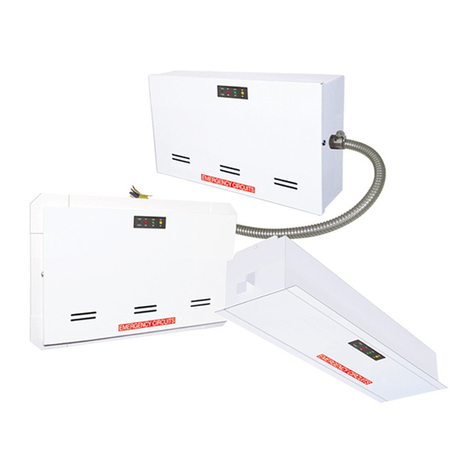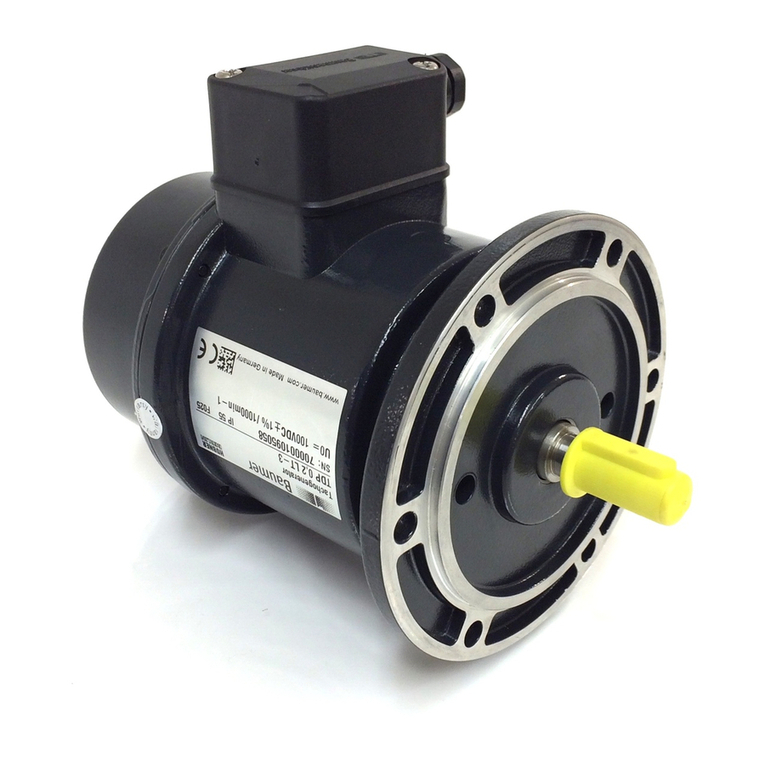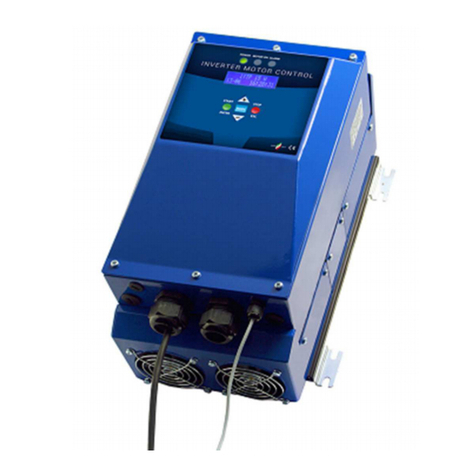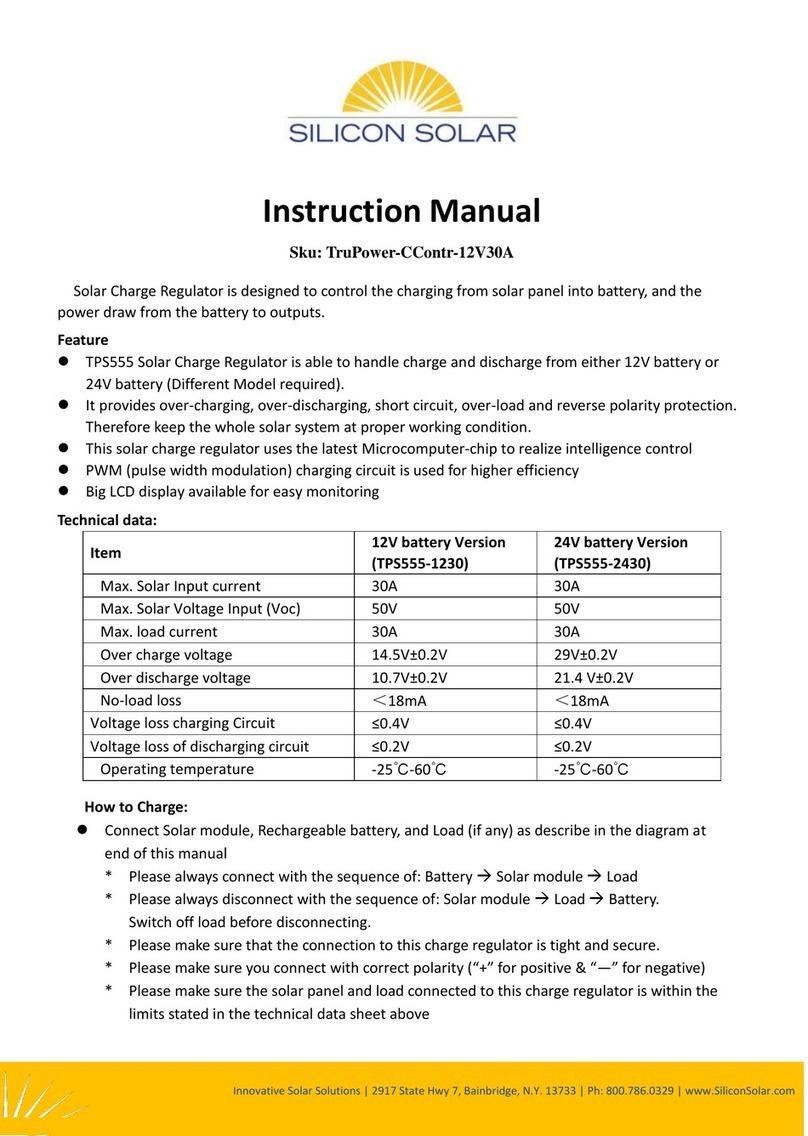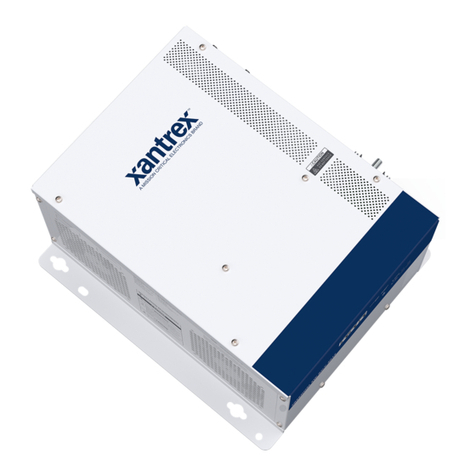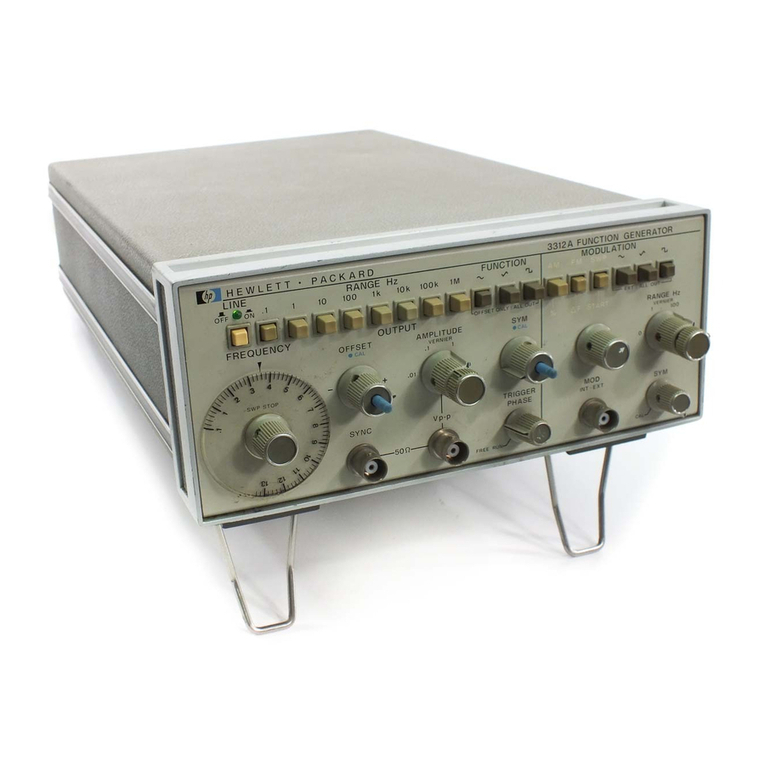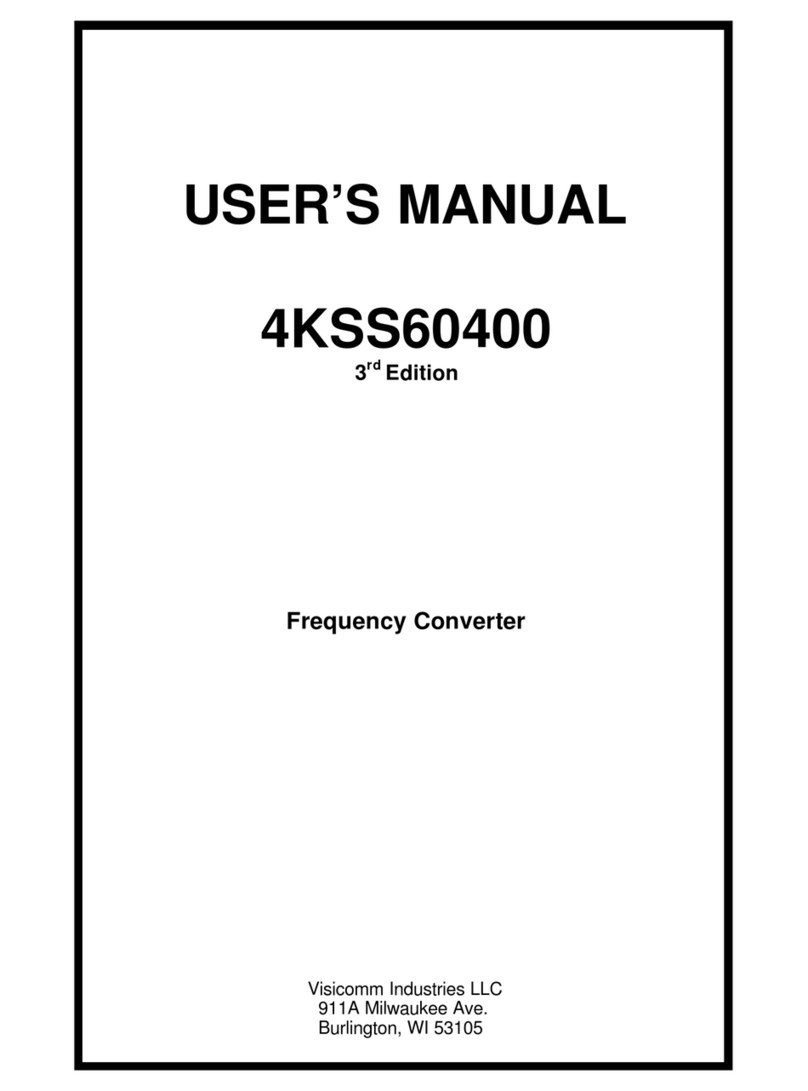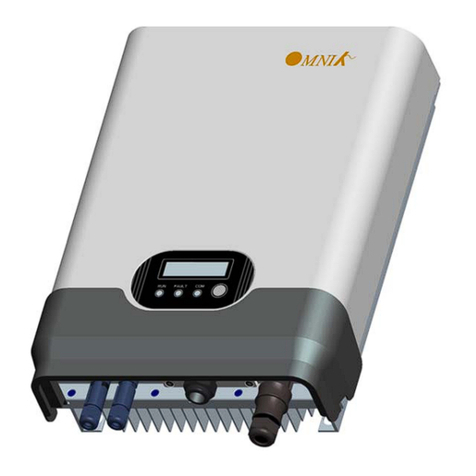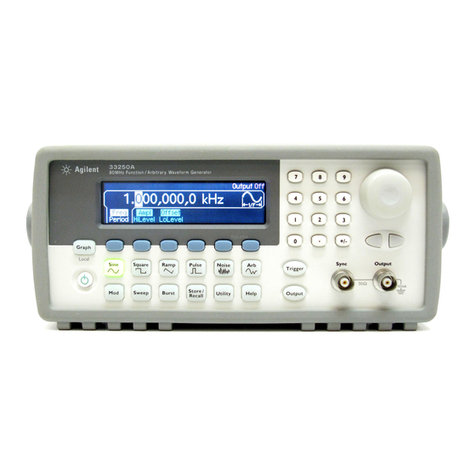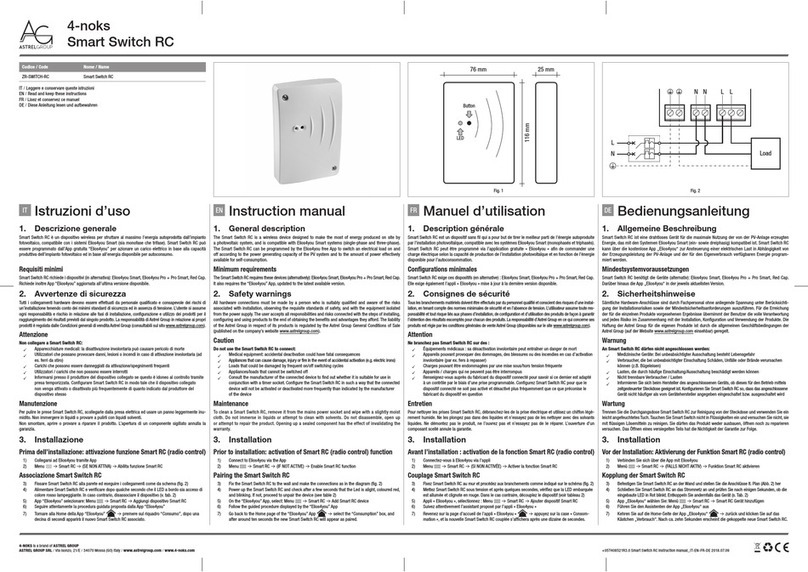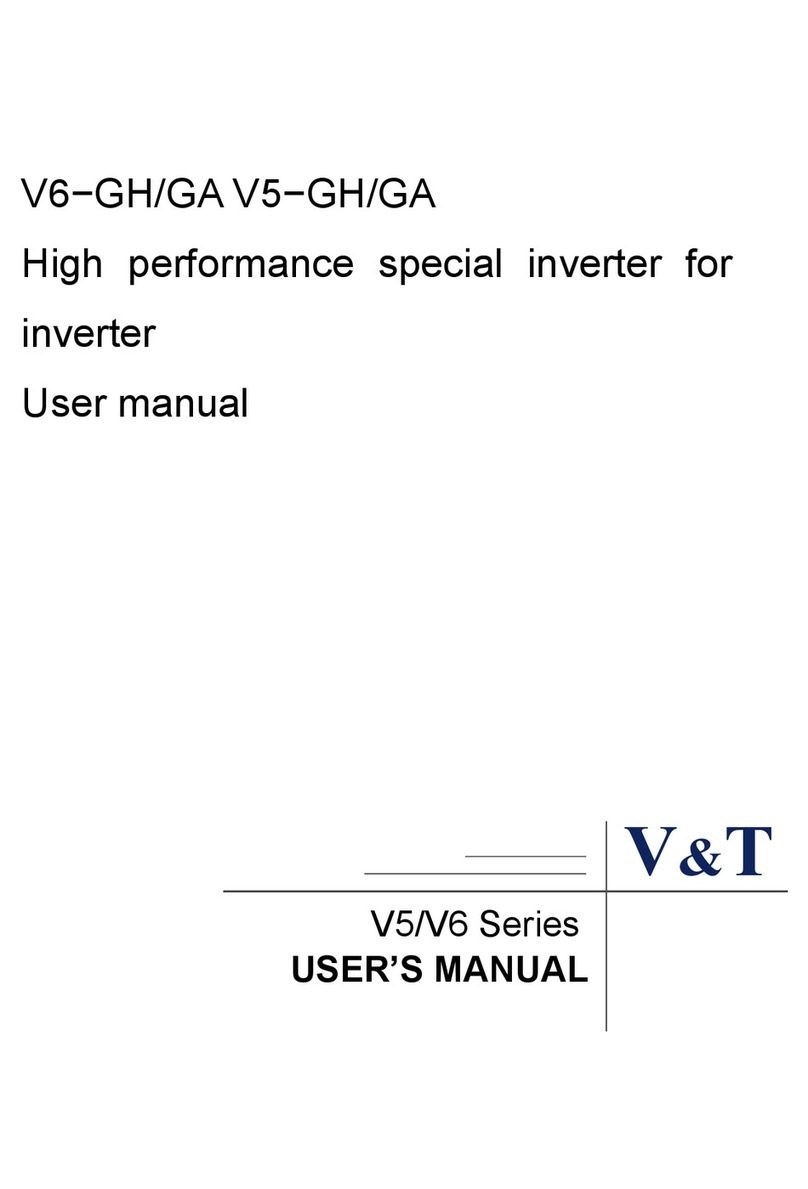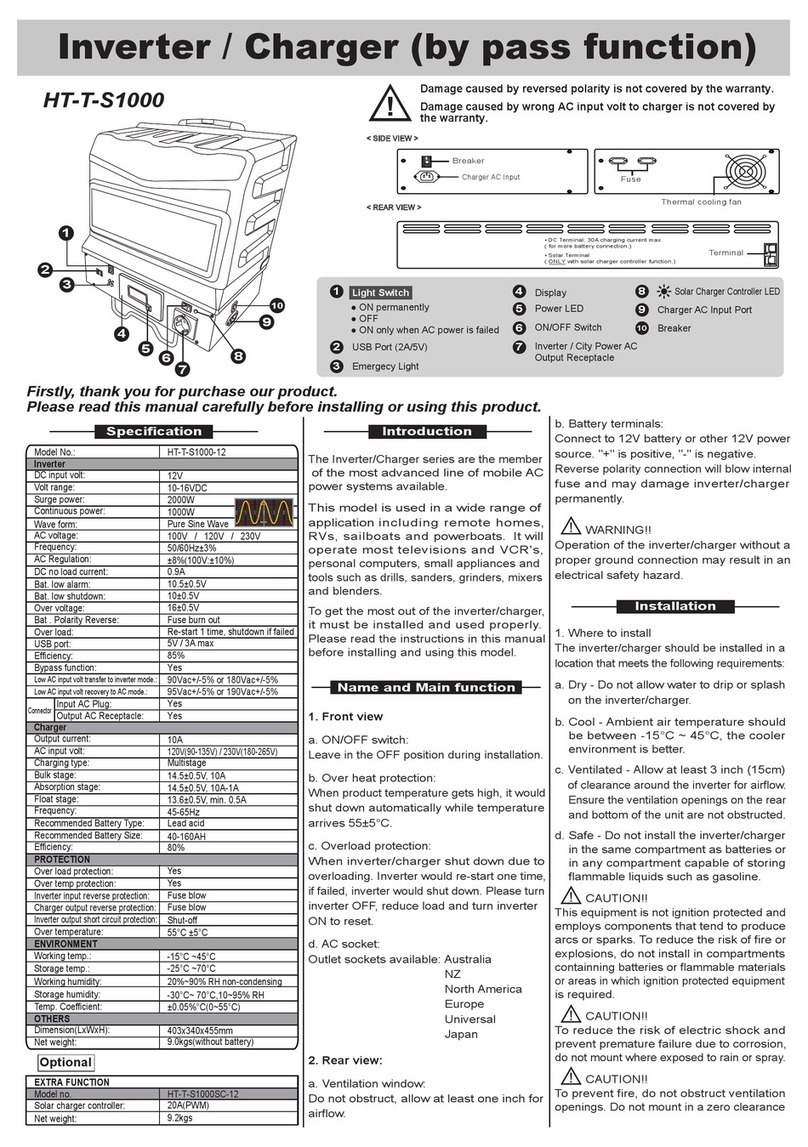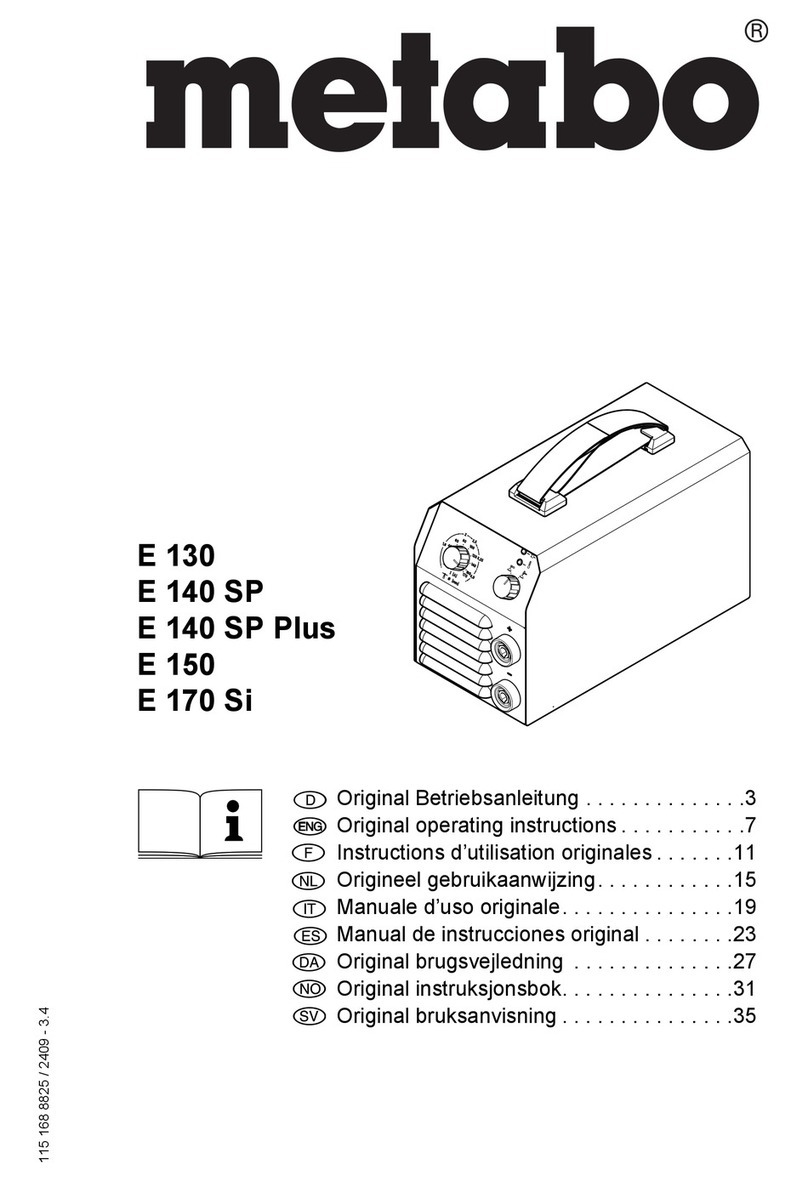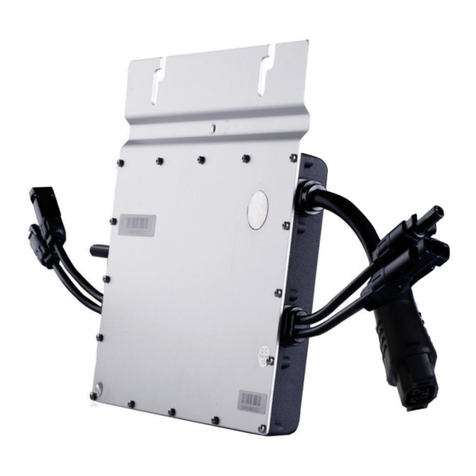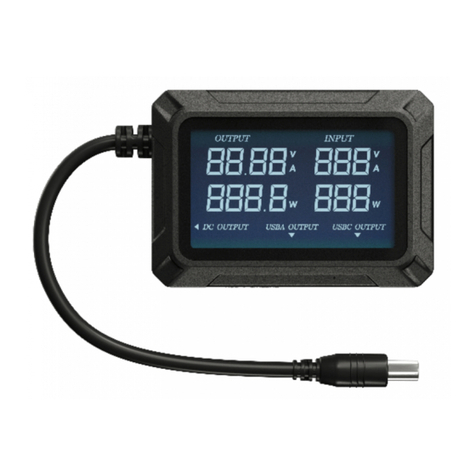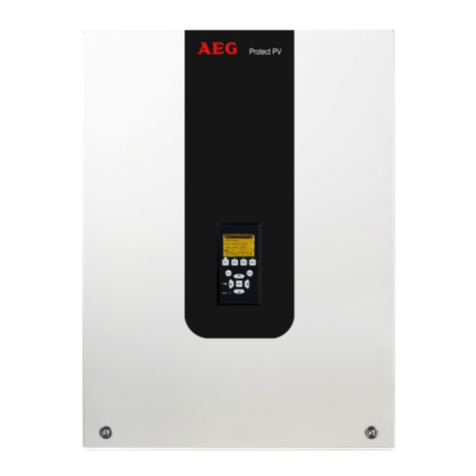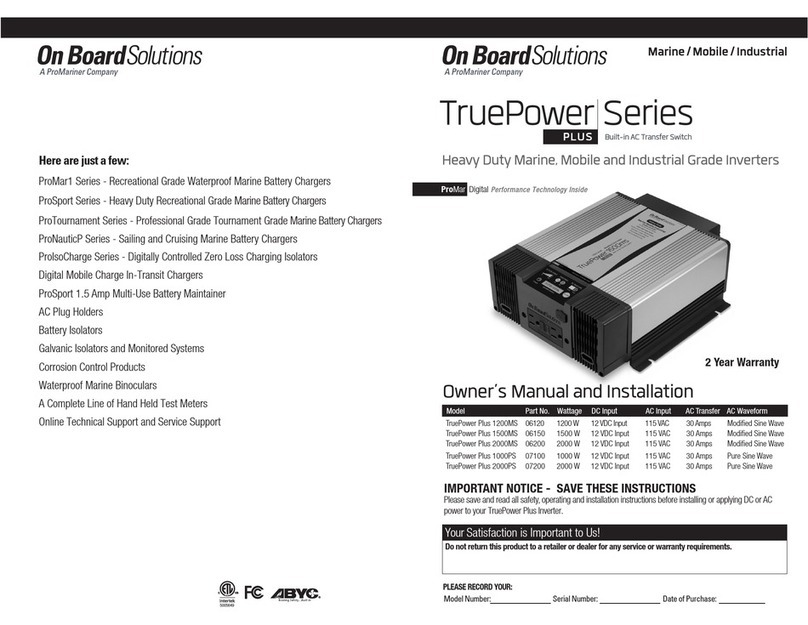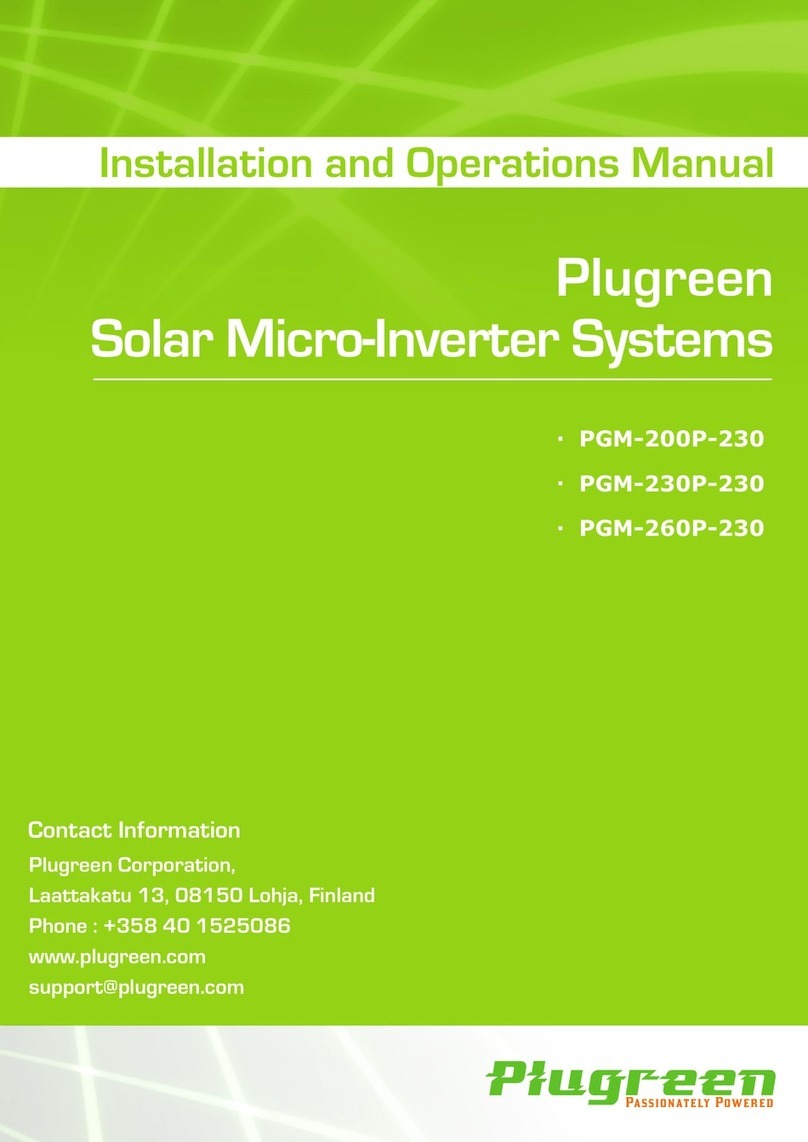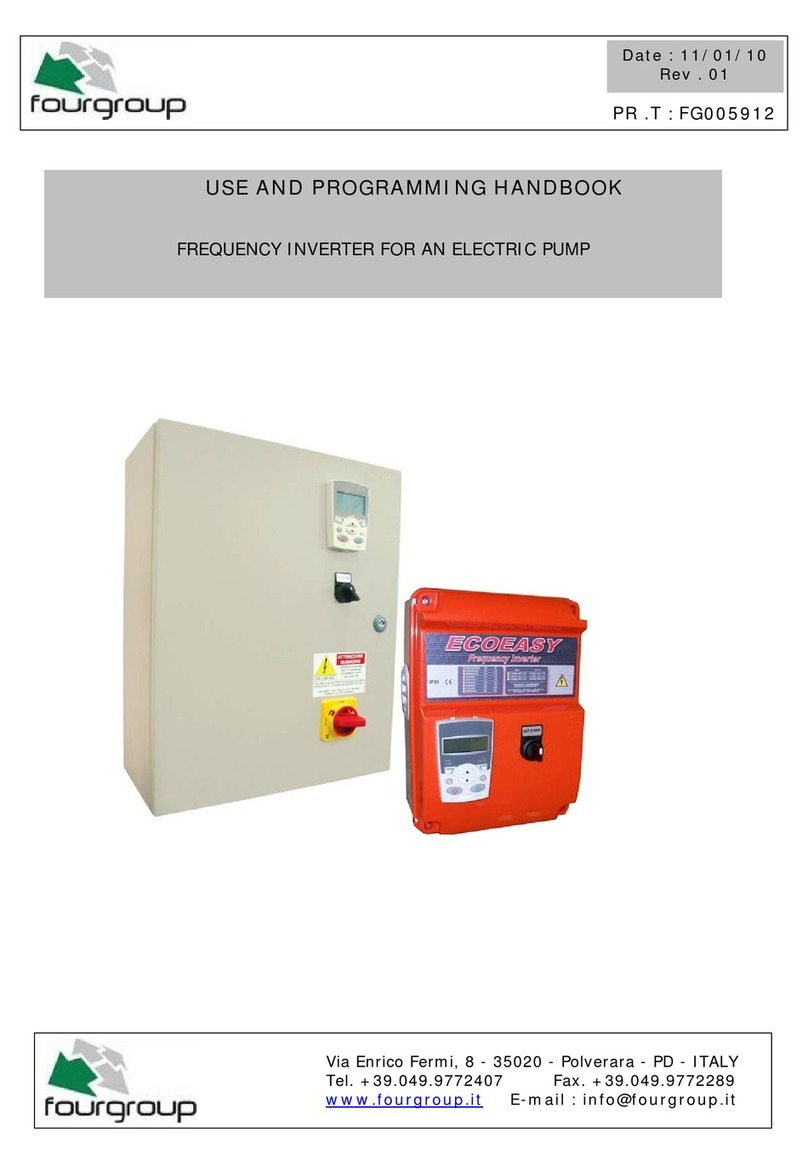
4
Input Power Connections and Grounding
System Ground Connection:
The Earth Ground should be provided by the utility. This is normally the “GREEN” wire
provided by the utility which at some point is routed to a secure earth ground such as a water
pipe. This wire should be connected to the screw post marked GND on the Converter (See
photo for location).
Note that there are no internal electrical connections to this wire with the exception of a
small high frequency bypass capacitor for RF suppression. Therefore, the function of the Earth
Ground is simply to maintain the case of the Converter at ground potential. Visicomm Industries
(LLC) does not recommend any other connection to the Earth Ground wire which may introduce
significant amounts of current and thereby defeat the intended purpose of this wire which is the
safety of the operating personnel. In particular, do not connect this wire to the system neutral
wire at any point.
OutputConnection:
The Power OUTPUT Connections are provided by three barrier terminal posts labeled N,
L1, and L2. These three terminals constitute the three terminals of an internal auto-trans former
were L1 is the “center tap”. This is fed by the output winding of a switching transformer. Since
the only other internal connections are a resonating capacitor, the cooling fans, and sensing
circuits( to maintain an output sine wave ), these output terminals are electrically isolated from
any other circuits including the system neutral.
The Converter is shipped with these OUTPUT connections electrically isolated. If a digital
voltmeter is connected between any one of these OUTPUT terminals and the Earth Ground, a
significant voltage reading will be obtained. This voltage is due to a small leakage current and is
not considered a problem since only 1 or 2 ma is involved.
OutputIsolation:
Many applications require an isolated output,primarily for safety reasons, when supplying
power to a device under test especially if there will be other monitoring equipment connected to
the device. Other applications can take advantage of the low leakage current of the Converter
(about 1 or 2 ma). This can be useful in systems where the individual leakage currents of the
components might exceed the allowed leakage current of a ground fault interrupter.
Other applications require that the output have a connection to the utility NEUTRAL.
Normally this would be OUTPUT terminal N (The exception would be a two phase output where
L1 would be the connection to the system NEUTRAL). The Converter is supplied with a short
jumper wire. If the system NEUTRAL is used to power the INPUT terminals and it is required that
the OUTPUT be connected to NEUTRAL this jumper can be employed to make this connection.
If the INPUT is supplied by two phase AC or by two phases of a three phase system (in
other words, if you have only two incoming power wires), this NEUTRAL would not be present
and an external wire from the desired OUTPUT terminal to the system NEUTRAL would be
required. See INPUT CONNECTION DIAGRAM on next page.
Basic diagram of output stage
